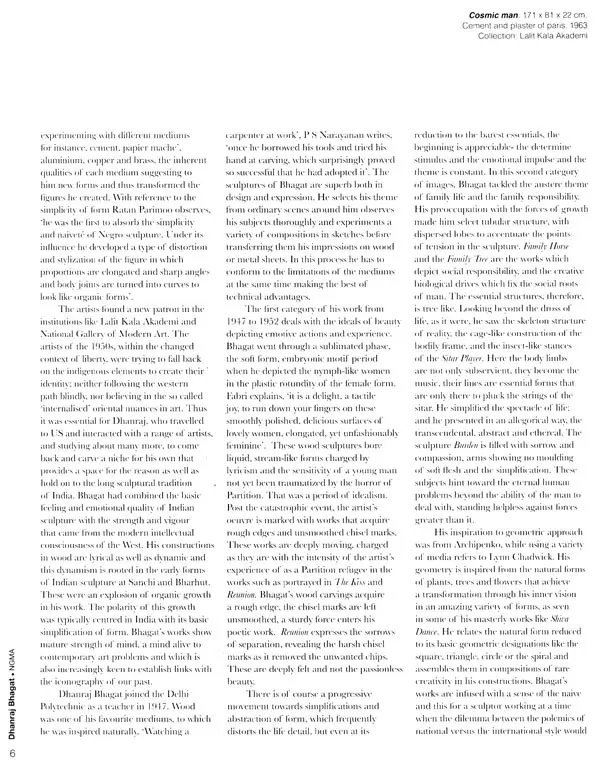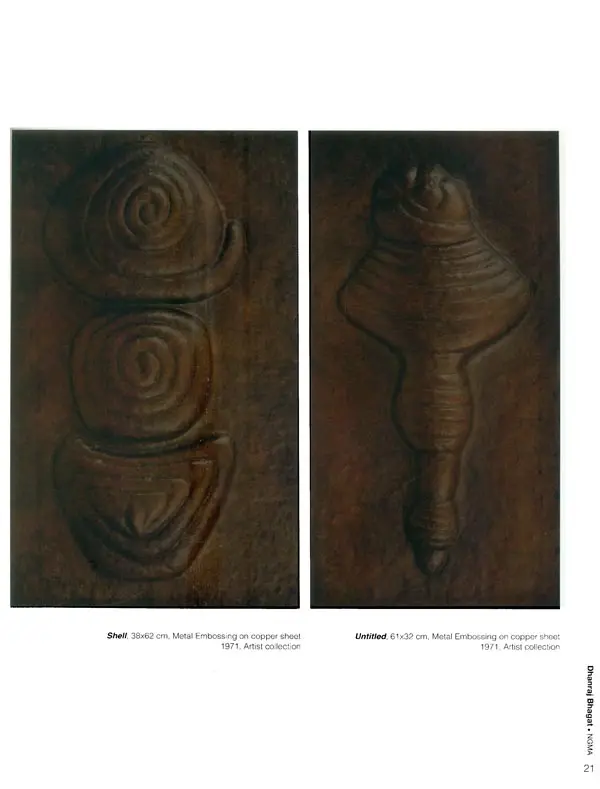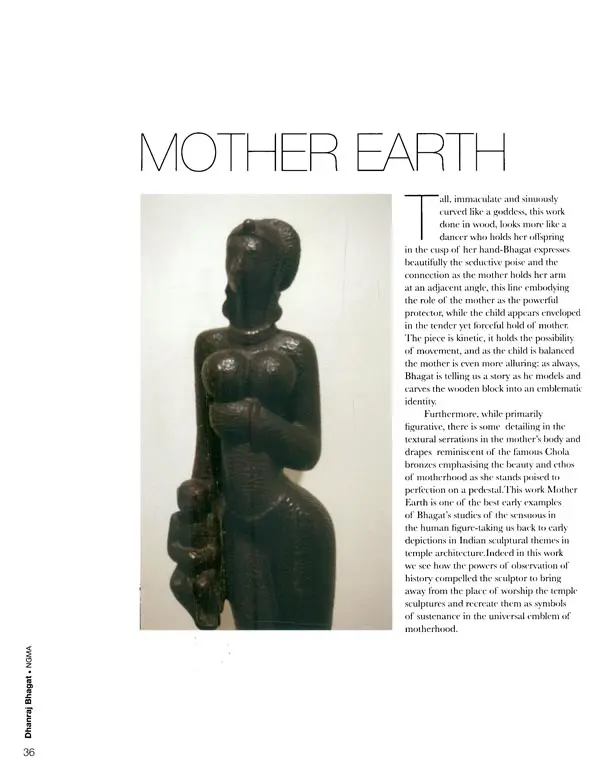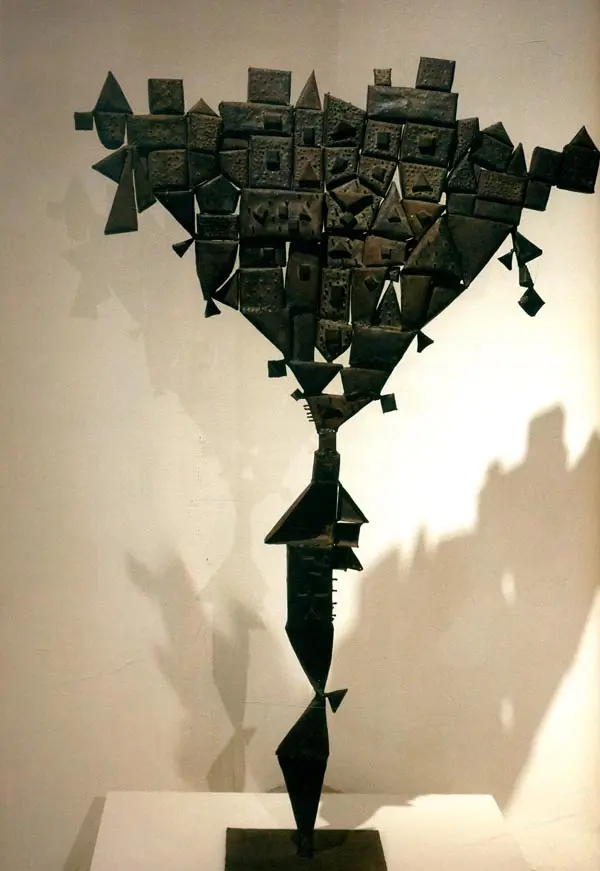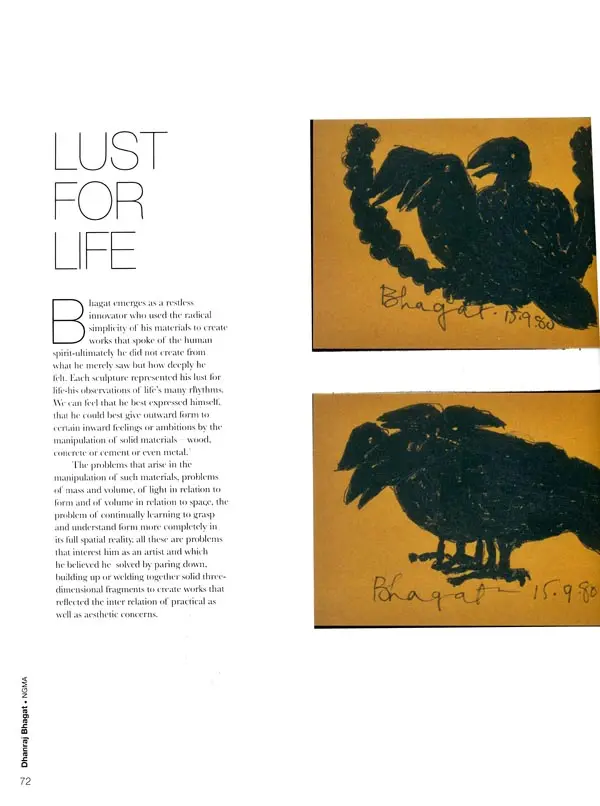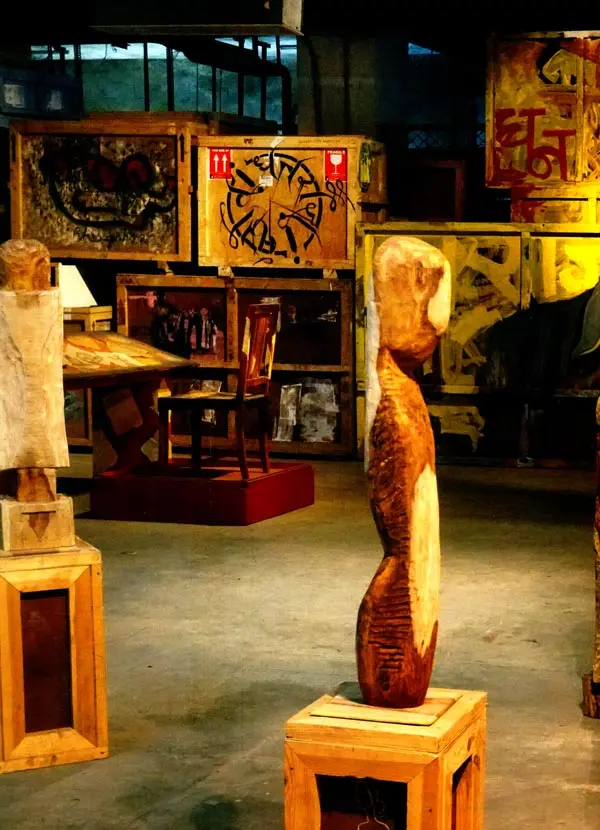
Journey from The Physical to The Spiritual
Book Specification
| Item Code: | UAH909 |
| Author: | Dhanraj Bhagat |
| Publisher: | National Gallery of Modern Art |
| Language: | English |
| Pages: | 104 (Throughout Color Illustrations) |
| Cover: | HARDCOVER |
| Other Details | 12.50 X 9.50 inch |
| Weight | 1.02 kg |
Book Description
The journey of Dhanraj Bhagat is an inspirational one. He was born in very austere condition which made him drop out of school and apprentice with a commercial sculptor at the age of sixteen doing all kinds of work which were way below his artistic potentialities. He saved up money and joined the Mayo School of Arts in Lahore to train in clay modeling. His dedication and his pure artistic expression was soon discovered and won him a scholarship to study for another year. After completion of his course, soon he was inducted to teach in the school. In the year 1946, his sculptures were exhibited at the International Exhibition in New Delhi, which impressed the Principal of the Delhi Polytechnic Art Department, who offered him the post of a teacher in his department. Awarded with many prestigious awards for his works and contribution to the field of art, he was bestowed with the fourth highest Indian civilian honor of Padma Shri by the Government of India in 1977.
The exhibition focuses on few significant works of Dhanraj Bhagat as well as highlights the moods and. styles of artist from his initial years to the later simplified geometric forms and icons. Music and lyrics were always present in the' sculptures of the past, especially in the bronze icons of Southern India. Dhanraj Bhagat evokes brilliantly the inner music in his take on the iconic Maharaja or Dancing Shiva, in the elongated lyrical limbs of the lord as though swaying in the tune of the music. Music also translates in his flowing sketches of women and musicians with almost ethereal quality. In the beginning, his subjects and depictions being men and women involved in daily activities, the ones he sees around him in the country side. The plasticity in molding the bull reflecting the virility and the power of the beast to the birds perched on a branch in the security found in familiar warmth of each other's bodies is the perfect balance of his style in inducing the right sprinkle of romanticism to an objective subject. In his later years, simple geometric forms dominated his style to form strong images of Monarchs and Gods. His spirituality took shape in his sketch studies of mythological episodes to ethereal apsaras (celestial beings).
The journey also took us to the warehouses of the Indian Railways in Delhi, to selvage the remains of the enormous repose panels of Dhanraj Bhagat, which once adorned the facade of the New Delhi Railways Station and the Railway Board Building. Some of these panels were lost during the renovation process and few still remain as permanent fixture on the walls of the Railway Board Building. Unfortunately, they could not be a part of this exhibition but becomes a goal for us to sensitize the society about the art that is around them and their involvement in keeping them safe and preserved for the generations to come.
I deeply thank Mr. Pramod Bhagat for sharing with us cherished memories of his father and allowing us to display significant works of art in this exhibition by his father from the family collection. It has truly enriched the meaning and scope of this exhibition. I thank all our lending organizations, DAG Modern (Delhi Art Gallery), All India Fine Arts & Crafts Society (AIFACS) and Lalit Kala Akademi, New Delhi, for landing important works of art for this exhibition. I thank the Ministry of Culture, Government of India, for their unstinted support. I also express my gratitude to the Advisory Committee of NGMA, New Delhi for their contant guidance and necessary support. I also like to extend my appreciation for the sincerest efforts of the entire NGMA team towards the successful execution of this mammoth project.
I wish this exhibition all the success.
Book's Contents and Sample Pages


